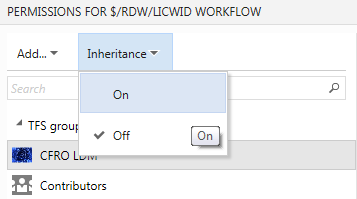Cycle Syncing Recipes: Unlocking Your Bicycle's Potential with Timeless Techniques
Guide or Summary:Gear Syncing: The Backbone of PerformanceBrake Syncing: Safety and ControlSuspension Syncing: Comfort and ControlCycling has become a stapl……
Guide or Summary:
- Gear Syncing: The Backbone of Performance
- Brake Syncing: Safety and Control
- Suspension Syncing: Comfort and Control
Cycling has become a staple in the modern lifestyle, offering a blend of fitness, transportation, and recreation. However, for many cyclists, their journey on two wheels is not just about the miles covered but the performance, comfort, and efficiency they gain from their bicycles. Enter cycle syncing recipes: a collection of time-tested methods and tips that can revolutionize the way you interact with your bike.
What exactly is cycle syncing? It's the art of fine-tuning your bicycle's components to work harmoniously together. This process involves adjusting the gears, brakes, suspension, and other critical elements to ensure they not only function well independently but also in perfect unison. By employing cycle syncing recipes, you can unlock the full potential of your bicycle, enhancing your ride's efficiency, speed, and comfort.
Gear Syncing: The Backbone of Performance
Gear syncing is perhaps the most crucial aspect of cycle syncing. It involves matching your bike's gear ratios to your riding style and the terrain you frequently encounter. There are several recipes to follow here, starting with understanding your cadence and how it interacts with your chosen gear.
The first recipe is to find the optimal gear ratio for your climbing and descending needs. This involves experimenting with different combinations of chainrings and cog sizes to determine the gear ratio that allows you to pedal efficiently while maintaining control on both inclines and declines.

Next, consider your terrain. Are you a regular commuter navigating city streets or a cross-country racer traversing rugged trails? Tailoring your gear ratios to your specific riding conditions is essential. For example, a mountain biker might benefit from a lower gear ratio to maintain control and speed on steep descents, while a road cyclist might prefer a higher gear ratio for consistent pedaling on flat terrain.
Finally, don't overlook the importance of shifting smoothly. Practice shifting gears seamlessly during your rides to avoid unnecessary strain on your bike's drivetrain and to ensure a smooth ride.
Brake Syncing: Safety and Control
Brake syncing is all about ensuring that your brakes work effectively and consistently, providing the necessary control and safety during your rides. This involves checking and adjusting your brake levers, cables, and pads regularly to maintain optimal braking performance.
One key recipe to follow is the brake pad alignment. Misaligned pads can cause uneven braking, leading to reduced braking power and potential damage to your rims. Regularly check your brake pads and adjust them so they make even contact with the rim when braking.

Another essential aspect of brake syncing is cable tension. Overly tight or loose brake cables can hinder your ability to apply consistent braking pressure. Adjust your brake cable tension periodically to ensure your brakes operate smoothly and effectively.
Lastly, consider the type of brake system you have. Whether you're riding a bike equipped with mechanical disc brakes or hydraulic rim brakes, understanding the intricacies of your brake system is crucial for effective braking.
Suspension Syncing: Comfort and Control
Suspension syncing is about finding the perfect balance between comfort and control. This involves adjusting your bike's suspension system to suit your riding style and the terrain you frequently encounter.
One recipe to follow is the front fork travel adjustment. Overly long or short front fork travel can lead to a harsh ride or excessive tire flex, affecting your control and comfort. Experiment with different travel lengths to find the sweet spot that suits your riding style.

Another critical aspect of suspension syncing is tire pressure. Properly inflated tires can significantly impact your ride's comfort and control. Check your tire pressure regularly and adjust it to the recommended level for your specific tire type and the conditions you ride in.
Finally, don't underestimate the importance of your bike's shocks. Properly tuned shocks can provide a smooth ride, absorb shocks, and maintain control over your bike. Adjust your shocks to suit your weight, riding style, and the terrain you encounter.
In conclusion, cycle syncing recipes offer a comprehensive guide to unlocking your bicycle's potential. By focusing on gear syncing, brake syncing, and suspension syncing, you can enhance your ride's efficiency, speed, comfort, and control. Embrace these recipes, and you'll find yourself cycling with renewed confidence and enjoyment. Whether you're tackling challenging terrain or cruising through serene landscapes, your bike will be your trusty companion, thanks to the power of cycle syncing recipes.